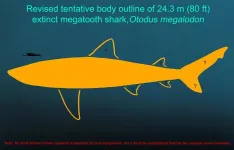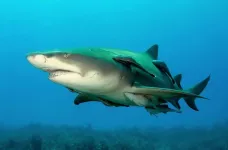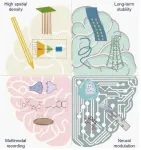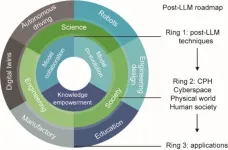(Press-News.org) A University of Oxford study has determined that the widely used tools available to businesses for assessing their biodiversity impacts depend on broad assumptions and can have large uncertainties that are poorly understood or communicated. If used appropriately, they can be powerful tools to help guide effective action to address biodiversity loss – but if not, they can lead to misguided effort and can be insufficient for robust biodiversity strategy design.
Businesses across a range of industries and sectors are under growing pressure to develop biodiversity strategies that not only minimise their negative impacts but also enhance their positive contributions to nature. As businesses start on their nature positive journey, a range of tools and approaches have emerged to help them assess risks and impacts on biodiversity. Among the leading approaches increasingly recommended for assessing organisational impacts on nature are Life Cycle Assessments (LCAs). These approaches offer a powerful means to track environmental impacts across all business activities and stages of product’s life cycles, capturing many of the pressures driving the loss of biodiversity from land-use change to eutrophication. The results provide businesses with data on their environmental impacts which can inform decision-making and measure progress year-on-year.
A new study led by researchers at the University of Oxford’s Nature Positive Hub and The Biodiversity Consultancy has investigated the assumptions made by these tools, and outlined the opportunities and risks associated with their use in biodiversity strategy design.
LCAs are one of the only methods accessible for assessing broad life cycle impacts by gathering data on company activities and estimating the environmental pressures exerted by all the inputs and outputs to a company’s activities. The methods are therefore now being used to estimate “biodiversity footprints”, a term used to refer to estimates of organisational biodiversity impacts. However, LCA-based methods and associated models were not originally developed for biodiversity footprinting and have recognised limitations in capturing the complexities of biodiversity.
In addition, despite their ease of use, LCAs carry significant uncertainties. These arise from the structure of the models—such as which biodiversity threats are included—the quality and completeness of the underlying data, and the way results are presented. As a result, these uncertainties can influence user decision making, potentially resulting in misleading conclusions.
Dr Thomas White (Department of Biology, University of Oxford), co-lead of the study, says: “Whilst recognised by those very familiar with LCAs, these uncertainties are often overlooked or poorly communicated to users. LCAs can be very powerful tools for understanding impacts on biodiversity, but without careful navigation, these uncertainties can lead to misinformed decisions, misallocated resources, and ineffective biodiversity strategies. In the paper we suggest ways that researchers and practitioners can help reveal, reduce, and appropriately navigate these uncertainties to improve LCA use.”
While LCAs are powerful tools for assessing biodiversity impacts across life cycle stages and biodiversity pressures, they must be used in conjunction with conservation science best practices and direct biodiversity monitoring to develop effective and actionable biodiversity strategies.
Dr Talitha Bromwich (Department of Biology, University of Oxford), the other co-lead of the study, says: “The tools can be very useful so long as an understanding of the risks posed by these uncertainties exists. Businesses should be able to weigh them against the costs of inappropriate action or inaction, and ensure decisions are robust to these uncertainties. If this is done well, then we can still design effective biodiversity strategies that utilise these tools to their greatest potential.”
The researchers have suggested several recommendations to embed these tools within business strategy design. These include:
Risk screening & tracking progress: LCAs are most effective for high-level risk screening, prioritising action, and tracking biodiversity impact reduction over time.
Complemented by other approaches: Once high-impact areas are identified, LCAs should be paired with more specific approaches to provide robust impact estimates and guide effective, location-specific recommendations from conservation science.
Cautious use & complementary metrics: LCA impact values should be interpreted carefully due to uncertainties and lack of specificity. Targets should combine LCA and non-LCA metrics, focusing on direct biodiversity measurements, pressure reductions, and clear conservation actions. Care should be taken when using absolute estimates of biodiversity impact from LCA’s in strategy design.
Notes to editors
Interviews with Thomas White & Talitha Bromwich are available on request: thomas.white@biology.ox.ac.uk; talitha.bromwich@biology.ox.ac.uk.
The paper ‘Navigating uncertainty in LCA-based approaches to biodiversity footprinting’ will be published in Methods in Ecology and Evolution at 05:01 AM GMT / 01:01 AM ET on Monday 10 March at: https://besjournals.onlinelibrary.wiley.com/doi/full/10.1111/2041-210X.70001
About the University of Oxford
Oxford University has been placed number 1 in the Times Higher Education World University Rankings for the ninth year running, and number 3 in the QS World Rankings 2024. At the heart of this success are the twin-pillars of our ground-breaking research and innovation and our distinctive educational offer.
Oxford is world-famous for research and teaching excellence and home to some of the most talented people from across the globe. Our work helps the lives of millions, solving real-world problems through a huge network of partnerships and collaborations. The breadth and interdisciplinary nature of our research alongside our personalised approach to teaching sparks imaginative and inventive insights and solutions.
Through its research commercialisation arm, Oxford University Innovation, Oxford is the highest university patent filer in the UK and is ranked first in the UK for university spinouts, having created more than 300 new companies since 1988. Over a third of these companies have been created in the past five years. The university is a catalyst for prosperity in Oxfordshire and the United Kingdom, contributing £15.7 billion to the UK economy in 2018/19, and supports more than 28,000 full time jobs.
The Department of Biology is a University of Oxford department within the Maths, Physical, and Life Sciences Division. It utilises academic strength in a broad range of bioscience disciplines to tackle global challenges such as food security, biodiversity loss, climate change and global pandemics. It also helps to train and equip the biologists of the future through holistic undergraduate and graduate courses. For more information visit www.biology.ox.ac.uk.
About The Biodiversity Consultancy
The Biodiversity Consultancy exists to bridge the worlds of business and biodiversity. Our work aims to accelerate organisations’ journeys towards nature positive futures. The Biodiversity Consultancy was born of a very clear premise: in the future, all businesses will need to think, operate and act with respect to nature and biodiversity.
Since our founding, science and innovation have been at the core of our approach, ensuring that the businesses we work with, and the standards we help set, are taking robust action that benefits nature. Being leaders in the underlying science of biodiversity, we continue to actively engage in scientific research - collaborating with research organisations to develop practical and robust solutions that improve business engagement with nature.
Our initiatives help businesses align with performance and international lender standards, manage risks and take effective action to mitigate their impacts. The Biodiversity Consultancy have played leading roles in developing best practice standards and frameworks. We are also an active member of the Taskforce on Nature-related Financial Disclosures (TNFD) Forum and the Science-Based Targets Network Corporate Engagement Program, and partner with industry associations such as the World Business Council for Sustainable Development, IUCN, and UNEP-FI.
For more information visit www.thebiodiversityconsultancy.com.
END
Common approaches for assessing business impact on biodiversity are powerful, but often insufficient for strategy design
2025-03-10
ELSE PRESS RELEASES FROM THIS DATE:
Can a joke make science more trustworthy?
2025-03-10
Politicians learned this lesson a long time ago: a well-placed joke is a valuable tool for capturing public attention and building trust. Scientists, however, are much more reluctant to use humor when engaging in science communication. They may fear that a lighthearted approach could make them seem less authoritative and, consequently, make scientific findings appear less credible.
The good news, however, is that science itself seems to contradict this assumption. A new study led by Alexandra Lynn Frank, a ...
Hiring strategies
2025-03-10
Krapivsky drew inspiration from the famous “secretary problem” or “optimal marriage problem”. In one of its many versions, a princess must choose her future husband from a pool of 100 candidates at a grand reception. However, strict rules apply: she may meet only one suitor at a time and has limited time to get to know him. At the end of each encounter, she must decide immediately whether to accept or reject the suitor. She cannot revisit previous candidates, nor can she ask any of them to wait while she considers others. How can the princess hope to make the best choice?
The secret lies in a number: 37, to be precise (raise your hand if you ...
Growing consumption of the American eel may lead to it being critically endangered like its European counterpart
2025-03-10
High demand for eel combined with decline in stock have resulted in soaring prices for this food item, which in many cultures, is considered a delicacy. This has fuelled a concern globally as the prized food item is now being illegally traded from Europe to Asia.
Current research has focused on the critically endangered Anguilla anguilla, commonly known as the European eel. While its export outside the European Union is tightly regulated, large quantities of A. anguilla juveniles continue to be smuggled ...
KIST develops high-performance sensor based on two-dimensional semiconductor
2025-03-10
Next-generation imaging technology is rapidly expanding beyond smartphones into intelligent devices, robotics, extended reality (XR) devices, healthcare, CCTV, and various other industries. At the core of these technological advances are highly efficient, ultra-compact image sensors that convert light signals into electrical signals. Image sensors capture and process visual information from objects and environments, enabling precise reconstruction of their shape, size, and spatial position.
Currently, commercial image sensors are primarily based on silicon semiconductors. ...
New study links sleep debt and night shifts to increased infection risk among nurses
2025-03-10
A new study examining the effects of sleep patterns and shift work on the immune system has found that sleep debt and night shifts increase the risk of several common infections in nurses.
Modern society relies on shift work, which requires employees to work outside of traditional hours. While essential in sectors such as healthcare, growing evidence suggests that these work patterns may negatively impact worker’s health.
This study, which analysed self-reported data from 1,335 Norwegian nurses, found that shift work – particularly night shifts – was associated with a higher risk of several infections, including the ...
Megalodon’s body size and form uncover why certain aquatic vertebrates can achieve gigantism
2025-03-09
CHICAGO — A new scientific study provides many new insights into the biology of the prehistoric gigantic shark, Megalodon or megatooth shark, which lived nearly worldwide 15-3.6 million years ago. Paleobiology professor Kenshu Shimada of DePaul University led the study along with 28 other shark, fossil, and vertebrate anatomy experts around the globe. Findings from the study will be published in the journal “Palaeontologia Electronica.”
Formally called Otodus megalodon, it is primarily known only from its serrated teeth, vertebrae, ...
A longer, sleeker super predator: Megalodon’s true form
2025-03-09
The megalodon has long been imagined as an enormous great white shark, but new research suggests that perception is all wrong. The study finds the prehistoric hunter had a much longer body—closer in shape to a lemon shark or even a large whale.
The study team, which included researchers from University of California, Riverside and across the globe, used a novel approach to estimate the shark’s total body length, moving beyond traditional methods that rely primarily on tooth size. By examining megalodon’s vertebral column and comparing ...
Walking, moving more may lower risk of cardiovascular death for women with cancer history
2025-03-09
Research Highlights:
Increased physical activity including taking more daily steps was linked to a lower risk of death from cardiovascular disease among postmenopausal women with a history of cancer.
The study found that engaging in one hour per day of moderate to vigorous physical activity reduced participants’ risk of death from any cause by 40% and risk of death from cardiovascular disease by 60%.
Each additional 2,500 steps per day for a participant was associated with a 34% reduction in risk of death from cardiovascular disease.
Note: The study featured in this news release is a research abstract. Abstracts presented ...
Intracortical neural interfaces: Advancing technologies for freely moving animals
2025-03-09
A recent study published in Engineering delves into the latest progress in intracortical neural interface technologies for freely moving animals. These interfaces, which establish a connection between the nervous system and external devices, have the potential to revolutionize neuroscience research and clinical medicine.
The researchers, led by Xinxia Cai, Zhaojie Xu and Yirong Wu, analyzed four key technological directions for ideal implantable neural interface devices: higher spatial density, improved biocompatibility, enhanced multimodal detection of electrical/neurotransmitter signals, and more effective neural modulation.
In terms of high spatial density, microelectrode ...
Post-LLM era: New horizons for AI with knowledge, collaboration, and co-evolution
2025-03-08
A recent paper published in the journal Engineering delves into the future of artificial intelligence (AI) beyond large language models (LLMs). LLMs have made remarkable progress in multimodal tasks, yet they face limitations such as outdated information, hallucinations, inefficiency, and a lack of interpretability. To address these issues, researchers explore three key directions: knowledge empowerment, model collaboration, and model co-evolution.
Knowledge empowerment aims to integrate external knowledge into LLMs. This can be achieved through various methods, including integrating knowledge ...





